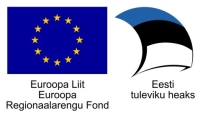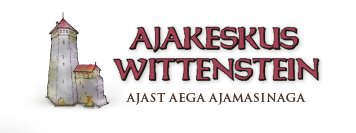Museum
History of Järvamaa Museum
The Järvamaa Museum celebrates its birthday on July 31, 1905, when the museum was opened to visitors. This day was preceded by years of preparatory work.
In 1892, the Baltic-German historian Aksel von Gernet gave a lecture on the city’s eventful history in Paides. Inspired by listening to this, they founded the “Tower Construction Committee”, whose goal was to restore Vallitorn. This involved the excavations on Vallimäe and around Paide and the renovation of Vallimäe into a recreation park for the townspeople.
Interest in history and archaeology, the fear that interesting finds will be lost or not reach all those interested, led to the founding of the Järvamaa Antiquities Preservation Society on January 12, 1904. The founders and leaders of the society were pharmacist and mayor O. Brasche, pastor C. Rall, merchant A. Stamm and others. The city of Paide provided free space in the city’s girls’ school for the storage of collections and for gatherings. The premises were quickly repaired, the local master carpenter made display cases, and the first entries in the guest book date back to July 31, 1905. On Sundays, for a ticket of 10 kopecks, from 12:00 to 1:00 p.m., you could see an exhibition of selected items from 498 museums.
In 1906, the first temporary exhibition was organized in the museum, it was of Pezold’s watercolors, which had been bought from the artist’s sister shortly before. Historical reading evenings were organized in the autumn-winter season, which later became very popular among the members of the society and the townspeople.
In 1912, Paide apothecary magister Oskar Brasche donated to the museum the most valuable collection to this day – the interior of Paide’s old pharmacy consisting of over 200 items. The early years of the Republic of Estonia were not easy for the museum founded by the Baltic Germans. Pastor Rall kept the congregations in order, but there were few active workers. In 1924, it was moved to new premises on the first floor of the school building at 18 Tallinn street. In 1926, the Society for the Preservation of Antiquities ceased operations, and according to the statutes, the museum was handed over to the Estonian Literary Association, which formed a branch of the Provincial Museum.
In 1941, the museum was evacuated to Väätsa, and by the October holidays of 1945, it was reopened in Paide. Unfortunately, some of the museums and all the catalogs were destroyed in the whirlwind of war. In the 1950s, the former veterinary hospital building that stood in ruins on the edge of Lembitu Park was converted into a museum building.
The permanent exhibition was opened here in 1956. The museum operates in this building to this day.
A. H. On the 80th anniversary of Tammsaare’s birth on January 30, 1958, a branch of the Järvamaa Museum was opened in the writer’s birthplace in Vetepere village, Albu municipality, Järva County – A.H. Tammsaare Museum.
By the writer’s 100th birthday, they managed to restore the hayloft, sauna buildings, barn, cattle yards and much more. The writer’s birthplace continues to be popular for its uniqueness and unique nature, as well as summer open-air performances in Estonian theaters.
In the 1970s and 1980s, the museum worked stably, the exposition was renewed, the collections were supplemented, and exhibitions were organized. A special page “Koduradadelt” appeared regularly in the district newspaper. The reputation of the museum was: “Small, but good!”
At the end of the 1980s, a planned sanitary renovation was planned in the museum. As the circumstances changed, it happened that alongside the new colors the content of the permanent exhibition completely changed.
The permanent exhibition completed in 1992 was one of the first completely renewed expositions in Estonian museums. The 90s brought new responsibilities to the museum’s activities, but in many ways also gave it free rein. A permanent exhibition of the older history of Järvamaa and the city of Paide has been completed in Vallitorn. Wax figures of A.H. Tammsaare, O. Brasche and the photographer caused excitement. Since 4.12.2002, Vargamäel SA A.H. Tammsaare Museum.
In 2005, the Järvamaa Museum celebrated its 100th birthday. The nature room of the museum and the 20th century A permanent exhibition reflecting part I, it was made possible by the collection activities of the 1990s – we collected many objects, documents, photos about this historical period.
The highlight of the celebrations was the exhibition of the JMAS collections, which is the gold fund of our museum. The museum’s fund storage was expanded, which with consistent work has become a suitable environment for keeping museums.
The substantive activity of the museum is at a new level – since 2003, we have been describing museums in the information system, first in KVIS and since 2009 in MUIS. A pedagogue was appointed – the work is expanding outside the museum.
On July 31, 2010, a new archeology permanent exhibition was opened.

